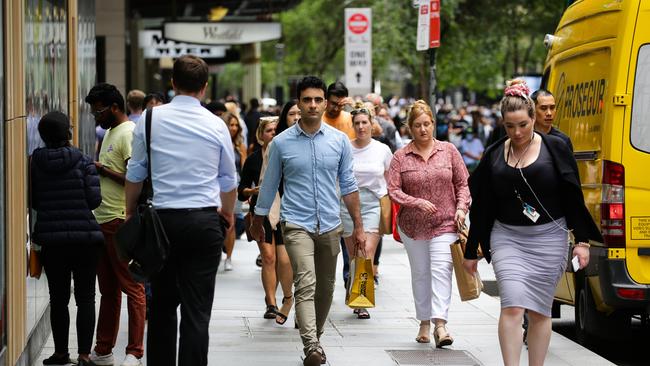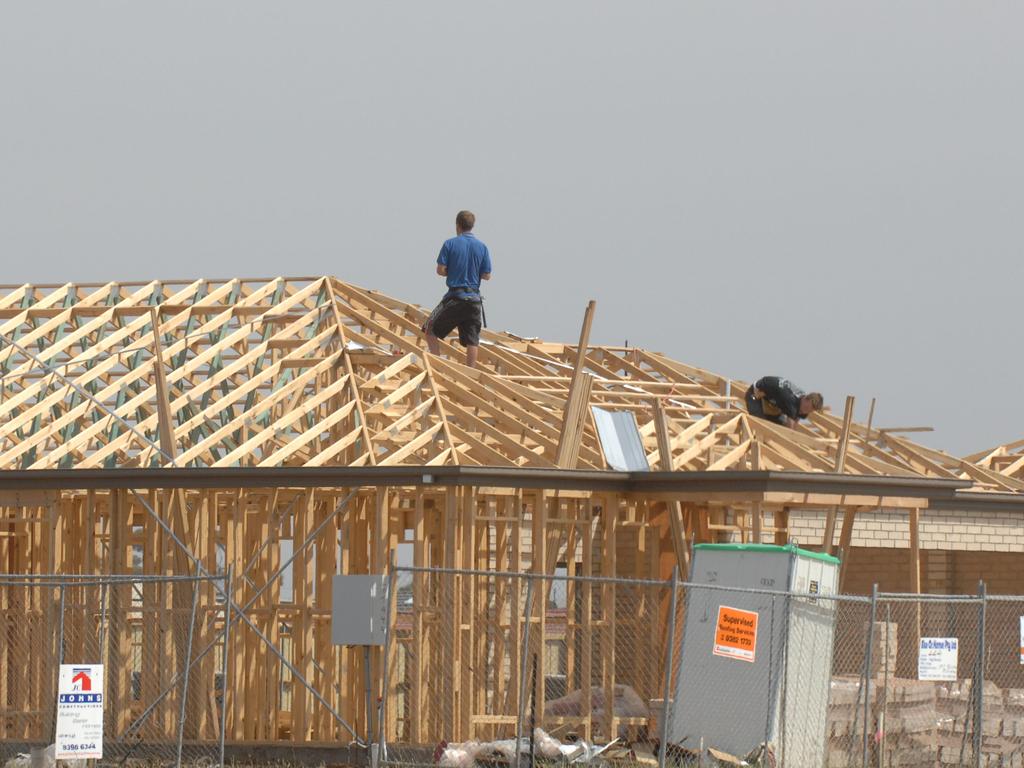Labour, supply shortages restrict growth in retail, manufacturing
There are hopes a national labour crisis may have peaked following a small drop in job vacancies but new data shows the shortage is still impacting booming industries.

Booming conditions for retailers and manufacturers are colliding with a “labour shortage crisis”, with new data showing that a record one in four of the nation’s employers are on the hunt for staff.
New figures from the Australian Bureau of Statistics showed 471,000 job vacancies in August, down 10,000, or 2 per cent, since May, but still more than twice as many as pre-Covid.
The drop, while small, was notable in the context of the tightest labour market in decades and hopes that the national staffing shortage may have at least peaked.
The latest ACCI-Westpac survey of industrial trends showed manufacturers enjoying boomtime conditions, even as they struggled with a “labour shortage crisis” that, alongside shortages in materials, was driving “spiralling costs”.
Nearly seven in 10 respondents said labour was harder to find in September, versus half three months earlier, the survey showed.
Westpac senior economist Andrew Hanlan said over the three months to September there had been “an acceleration in manufacturing output and a flood of new orders”.
“The downside to this generally positive picture of rising new orders is that manufacturers are facing gale-force supply headwinds,” Mr Hanlan said.
“Intense labour and material shortages are resulting in spiralling costs and constraining output growth,” he said.
The ABS figures showed retailers were ramping up recruiting amid record spending in stores and cafes, with vacancies in the sector jumping by 14 per cent over the three months to August.
Australian Retailers Association chief executive Paul Zahra said the new numbers showed the challenges facing the industry as they tried to ramp up staff levels leading into the festive season.
“Labour shortages are the number one concern for retail currently with many businesses forced to reduce trading hours in response to worsening staff availability. Unfortunately, this situation is exacerbating during the most critical time of year on the retail calendar – the Christmas trading period,” Mr Zahra said.
“In advance of the holiday shopping surge, retailers have already begun their recruitment drives for tens of thousands of additional Christmas casuals to cope with demand, however with the scale of the labour crisis getting worse for retail, it’s unlikely that businesses will be able to fill all the roles they have available to trade at their full potential,” he said.
Evidence of an ongoing national workforce challenge came as Jim Chalmers released the terms of reference for the government’s employment white paper, to be handed down in a year’s time.
The Treasurer said the white paper was the next step “addressing some of our nation’s big economic challenges”, and followed the government’s two-day Jobs and Skills Summit earlier this month.
“It will have an overarching focus on full employment, productivity growth, and improving women’s economic participation and equality,” Dr Chalmers said.
“The white paper will look at topics including the future of work, job security, labour supply, and how we use skills and training to expand opportunities to more people in more parts of our country.”
The terms of reference put “full employment and increasing labour productivity growth and incomes” as the first priority for review.
With the unemployment rate at 3.4 per cent and little evidence of a wage-drive inflation spiral, Melbourne University economics professor Jeff Borland said it was appropriate to put “full employment and increasing labour productivity growth and incomes” as the first of six major themes.
Professor Borland said the ongoing strength in the labour market reflected “a battle between the momentum that’s still in the economy, versus the RBA and what we will see in the budget next month”.
With unemployment at a near 40-year low of 3.4 per cent, the sheer volume of vacancies pointed to ongoing employment growth.
“It would really be a surprise if in the next three months the unemployment rate jumps because of a big slowdown in labour demand,” he said.
The ABS figures showed the proportional fall in job vacancies was largest in the construction sector, where builders have struggled to remain profitable amid surging costs and shortages. Vacancies in the sector were 33,500 in August, or 16 per cent fewer than in May. There were also 10 per cent falls in the number of vacancies in the education and training and arts and recreation industries.
In contrast, the number of available roles in the transport, postal and warehousing sector jumped by 17 per cent, to 17,700, and by 15 per cent in retail trade, to 46,100.
The data showed how businesses in sectors devastated by Covid health restrictions have struggled to rehire workers as the economy roared back to life from enforced shutdowns.
There were 59,000 vacancies in the hospitality sector, the ABS figures showed, or four times as many than in February 2020, and more than three times as many in the arts and recreation sector, at 6600.






To join the conversation, please log in. Don't have an account? Register
Join the conversation, you are commenting as Logout